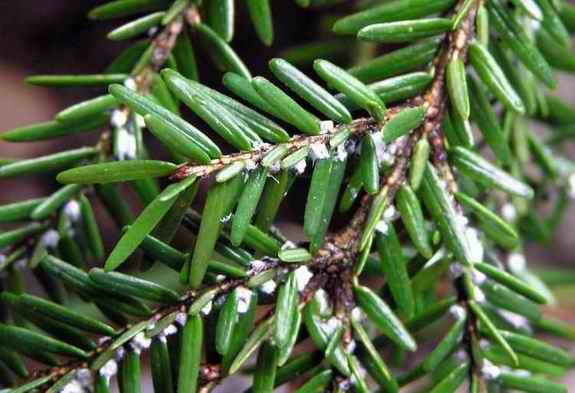|
Common Name: Woolly Adelgid, Hemlock Woolly Aphid, Hemlock Chermid Scientific Name: Adelges tsuga (Tsuga is the genus of the hemlock tree)
Potpourri: The woolly adelgid was introduced from Asia to the Pacific Northwest in the 1920's and spread to the Northeast in the 1950's. The insect has been attacking the Eastern Hemlock (Tsuga canadensis) and the Carolina hemlock (T. caroliniana) in the southern Appalachians for the last thirty years. Adelgids are closely related to aphids, being distinguished by the fact that they feed only on conifers (cone-bearing trees).
Adelgids are all females that produce two generations a year. In early spring, 100 to 300 eggs are laid by over wintering adults. Larvae emerge in late spring and transform into sessile nymphs that feed by sucking the fluid out from the base of the needles, secreting fluffy, white "wool" from which their name derives. By early summer, the nymphs transform into winged and wingless adults. The winged adults search for a spruce that is indigenous to their Asian habitat but not present in North America and eventually die. The wingless adults produce the second generation that reaches the nymph stage in July, molts in the autumn, and over winters in the adult stage to complete the cycle.
The Woolly Adelgid is difficult to control because the "wool" is a waxy substance that protects it from water loss and from predators. Although both horticultural oils and insecticidal soap are effective controls, it is prohibitively expensive to treat large areas. The Japanese ladybug (Pseudoscymnus tsugae) is a natural predator of the adelgid. Thousands have been released in the Great Smokey Mountains to help control the pest. |
